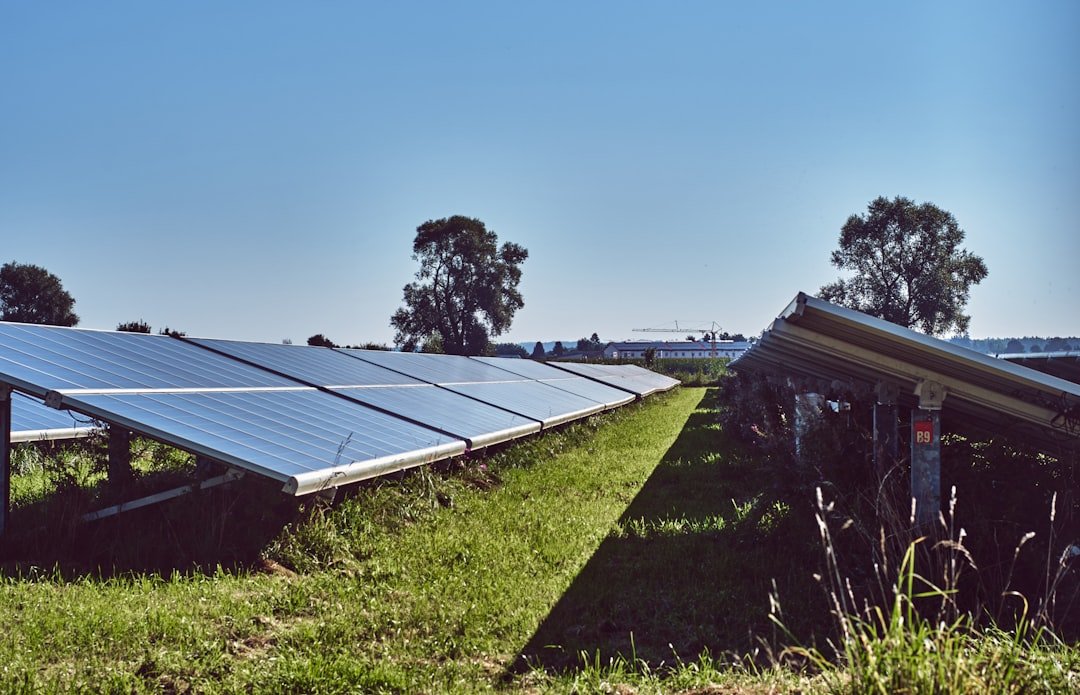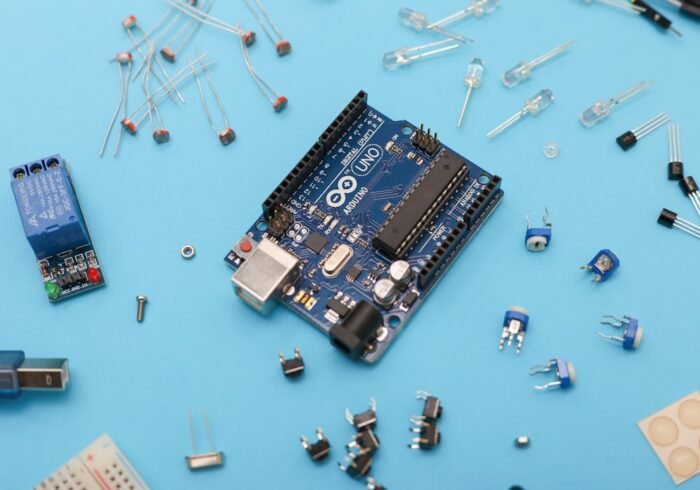The Significance of Renewable Energy in Smart Cities The idea of smart cities has become a ray of hope for sustainable living as urbanization keeps speeding up. Renewable energy is crucial in this situation. Why renewable energy is so important for smart cities may be a mystery. The urgent need to fight climate change and cut carbon emissions holds the key. The use of fossil fuels, which are not only limited but also harmful to the environment, can be greatly reduced in smart cities by utilizing energy from sources like solar, wind, and hydro.
Key Takeaways
- Renewable energy is crucial for the sustainability and resilience of smart cities, reducing reliance on fossil fuels and mitigating climate change.
- Technology plays a key role in implementing renewable energy solutions, such as smart grids, energy storage systems, and advanced monitoring and control systems.
- The benefits of renewable energy for smart cities include reduced greenhouse gas emissions, improved air quality, energy cost savings, and job creation in the clean energy sector.
- Overcoming challenges in implementing renewable energy in smart cities requires innovative financing mechanisms, public-private partnerships, and community engagement.
- Case studies of successful renewable energy projects in smart cities, such as solar-powered street lighting and wind energy integration, demonstrate the feasibility and benefits of clean energy solutions.
- Government policies play a crucial role in promoting renewable energy in smart cities through incentives, regulations, and long-term planning for sustainable energy infrastructure.
- The future of renewable energy in smart cities is promising, with advancements in technology, increasing public awareness, and growing support for clean energy initiatives.
- Citizens can contribute to the transition to renewable energy in smart cities by adopting energy-efficient practices, supporting renewable energy policies, and participating in community energy projects.
To create a sustainable future, this transition is essential, not just a choice. Also, renewable energy promotes resilience and energy security. Smart cities need to figure out how to guarantee a steady and dependable energy supply in a world where energy demands are continuously increasing. Investing in infrastructure for renewable energy can contribute to the development of a decentralized energy system that is less susceptible to interruptions.
Because of this, your city can continue to supply energy even in the event of natural disasters or geopolitical unrest, guaranteeing that vital services continue to run. Building a strong and resilient urban environment is the goal of integrating renewable energy into smart city architecture, not just sustainability. In order to implement renewable energy solutions in smart cities, technology is essential.
The ways in which cutting-edge technologies like blockchain, artificial intelligence, and the Internet of Things (IoT) are transforming how we produce and use energy may surprise you. For example, real-time monitoring of energy consumption patterns by IoT devices enables more effective resource utilization. City planners can ensure that every kilowatt is used efficiently by analyzing this data to optimize energy distribution & cut waste. AI is also essential for managing supply and forecasting energy demand.
| City | Renewable Energy Source | Percentage of Energy from Renewable Sources |
|---|---|---|
| New York City | Solar | 15% |
| San Francisco | Wind | 20% |
| Copenhagen | Biomass | 30% |
Imagine that your city is able to predict periods of high energy consumption and modify its output of renewable energy in response. This degree of foresight reduces the need for backup fossil fuel power plants while simultaneously increasing efficiency. Also, citizens can buy and sell excess energy produced by their solar panels thanks to peer-to-peer energy trading made possible by blockchain technology. In addition to encouraging the use of renewable resources, this creative strategy gives you the power as a consumer to actively participate in the energy market. Beyond just promoting environmental sustainability, smart cities can also benefit from the integration of renewable energy.
Economic growth is among the biggest benefits. Jobs in a variety of industries, including solar panel manufacturing & wind turbine installation, can be generated by investing in renewable energy infrastructure. These positions boost local economies in addition to offering employment opportunities.
Your city may see an increase in entrepreneurship and innovation as more people get involved in the renewable energy sector. Apart from its financial advantages, renewable energy also improves public health. Air pollution, which poses major health risks to urban populations, is frequently caused by traditional energy sources. You can contribute to better air quality and a decrease in health problems like respiratory and cardiovascular disorders by switching to cleaner energy sources. The community will become healthier and more productive as a result of this change, which also helps individual citizens and lessens the strain on healthcare systems. Even though renewable energy has many benefits, there are drawbacks to integrating these technologies in smart cities.
The initial outlay needed for infrastructure related to renewable energy is a major obstacle. It may be difficult for many cities to set aside enough money for these projects, particularly when they are compared to other urgent urban needs like housing and transportation. But it’s important to understand that the long-term advantages and savings frequently exceed the upfront expenditures. Public acceptance and perception of renewable energy technologies present another difficulty.
People who are used to traditional energy sources or who are worried about possible disruptions during the transition period may be skeptical. Engaging the community through outreach and education initiatives is essential to removing this obstacle. Citizens can be encouraged to support & take ownership of these projects by being informed about the advantages of renewable energy and included in decision-making processes. Analyzing successful case studies can yield important information about how smart cities can successfully incorporate renewable energy.
San Diego, California, is a prominent example, having set lofty targets to use only renewable energy by 2035. San Diego has achieved this goal with notable progress through a combination of wind farms, solar power installations, & energy efficiency initiatives. You might find it encouraging that the city has also involved its citizens in local renewable projects by allowing them to invest in community solar programs. Copenhagen, Denmark, is another interesting case study.
It has emerged as a global leader in sustainable urban development. A vast network of district heating systems and wind turbines that are fueled by waste heat and biomass have been installed by the city. As an example of how ambitious goals can spur innovation and cooperation among diverse stakeholders, Copenhagen hopes to achieve carbon neutrality by 2025.
These instances show that cities can effectively switch to renewable energy sources if they are determined and plan ahead. In smart cities, government policies are essential for advancing renewable energy projects. You may already be aware that legislation that encourages investment and innovation can foster an atmosphere that is favorable to both. For example, tax credits, grants, and subsidies are examples of incentives that can motivate individuals & companies to embrace renewable technologies.
Governments can encourage demand for clean energy solutions and lower financial barriers for citizens by putting these policies into place. Also, the responsible and sustainable development of renewable energy projects depends on regulatory frameworks. It may interest you to learn that numerous cities have implemented renewable portfolio standards, which require a specific proportion of energy to come from clean sources, or zoning laws that give preference to renewable energy installations. These regulations not only direct development but also convey a dedication to sustainability, which appeals to both businesses and locals.
Renewable energy in smart cities has a bright but difficult future. You can anticipate advancements like smart grids and sophisticated battery storage systems to improve the dependability and efficiency of renewable energy sources as technology develops further. Cities will be able to smoothly integrate various forms of generation and manage their energy resources more effectively thanks to these developments. On the other hand, as cities increase their efforts to use renewable energy, it is crucial to be aware of any potential roadblocks.
Stakeholders will need to continue to pay attention to and work together on issues like grid integration, regulatory barriers, and public acceptance. In order to actively contribute to the sustainable future of your city, it might be helpful for you to keep up with the latest developments and best practices in the application of renewable energy. You have an important part to play as a citizen in the shift to renewable energy in smart cities. Advocating for local policies that support clean energy initiatives is one of the most effective things you can do.
You can strengthen your voice and have an impact on decision-making processes by interacting with your elected officials and taking part in community forums. By implementing renewable technologies in your own house or place of business, you can also make a difference. Your actions, such as putting up solar panels or taking part in neighborhood solar initiatives, can increase demand for clean energy sources. Also, you might think about volunteering for projects that raise awareness of renewable energy sources or joining neighborhood groups that are dedicated to sustainability.
In conclusion, incorporating renewable energy into smart cities offers potential for community resilience, public health enhancement, & economic growth in addition to being an environmental necessity. Your city and its citizens can have a sustainable future if you recognize the significance of this shift and take an active role in it.



